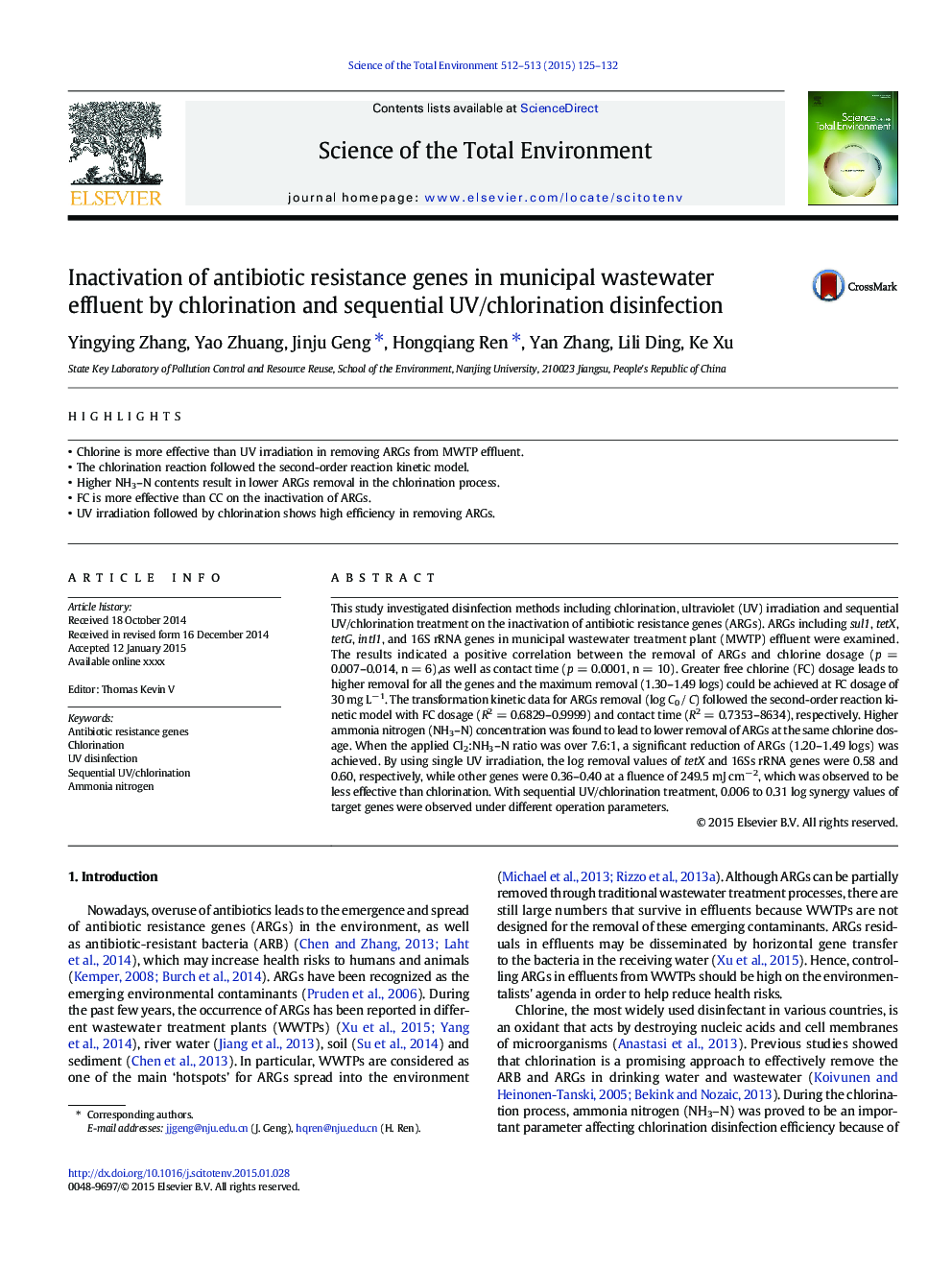| Article ID | Journal | Published Year | Pages | File Type |
|---|---|---|---|---|
| 6327155 | Science of The Total Environment | 2015 | 8 Pages |
Abstract
This study investigated disinfection methods including chlorination, ultraviolet (UV) irradiation and sequential UV/chlorination treatment on the inactivation of antibiotic resistance genes (ARGs). ARGs including sul1, tetX, tetG, intI1, and 16S rRNA genes in municipal wastewater treatment plant (MWTP) effluent were examined. The results indicated a positive correlation between the removal of ARGs and chlorine dosage (p = 0.007-0.014, n = 6),as well as contact time (p = 0.0001, n = 10). Greater free chlorine (FC) dosage leads to higher removal for all the genes and the maximum removal (1.30-1.49 logs) could be achieved at FC dosage of 30 mg Lâ 1. The transformation kinetic data for ARGs removal (log C0 / C) followed the second-order reaction kinetic model with FC dosage (R2 = 0.6829-0.9999) and contact time (R2 = 0.7353-8634), respectively. Higher ammonia nitrogen (NH3-N) concentration was found to lead to lower removal of ARGs at the same chlorine dosage. When the applied Cl2:NH3-N ratio was over 7.6:1, a significant reduction of ARGs (1.20-1.49 logs) was achieved. By using single UV irradiation, the log removal values of tetX and 16Ss rRNA genes were 0.58 and 0.60, respectively, while other genes were 0.36-0.40 at a fluence of 249.5 mJ cmâ 2, which was observed to be less effective than chlorination. With sequential UV/chlorination treatment, 0.006 to 0.31 log synergy values of target genes were observed under different operation parameters.
Related Topics
Life Sciences
Environmental Science
Environmental Chemistry
Authors
Yingying Zhang, Yao Zhuang, Jinju Geng, Hongqiang Ren, Yan Zhang, Lili Ding, Ke Xu,
